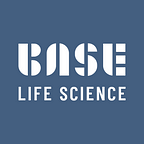SOP Reduction, an easy way to create value during migration
Lots of life science companies have undertaken the journey of introducing a new cloud-based document management system in the last years. At the recent TMF summit, for example, there was no discussion about the fact that those implementations are required. Those projects often necessitate migrating documents from your old systems to the new solution. As my colleague Michelle Savage mentioned in her last whitepaper, those migrations can quickly become a calamity for business users and it’s hard to add value in that step of the process.
Reducing the pain leveraging AI seems natural given the repetitive nature of migration activities but this tackles the “cost” of the migration and not the business value. By repeating the process over multiple engagements, we came to realize that it is also possible to increase the benefits beyond just migrating documents. Since we have already developed algorithms to read and classify documents in scope for migration, we can utilize this information to identify redundancies between documents.
Leveraging the core of the migration activities
Preparing data for document migration requires classification of all SOPs. Whether you are using algorithms or brute force to perform that action doesn’t matter, the result will always be hopefully proper classification of those essential documents. The next steps are critical to identify the redundancy. There are two sides of the coin at that stage. First, through Natural Language Processing, it’s possible to check the percentage of redundancy between documents. Exact copies should, of course, be removed from the migration scope. The next step is to check on the metadata classification. Couple with a heat map, it will be possible to see where there are redundancies.
An example may help illustrate this case. Imagine that a given process has 20 SOPs in English, but only 2 SOPs in another language. From those numbers, it would be impossible to deduce whether there is missing information in one of the other, but if this is coupled with the similarity check from the NLP analyses, you will be able to know whether the 20 SOPs share information or whether the 2 contains an aggregation of the data. All in all, you will have plenty of opportunities to reduce the number of SOPs to migrate.
A simple business case
Of course, the additional analysis would require resources, but it should be an easy sell. The objective is to lean the number of SOPs for the users. Each SOP not migrated is a win for multiple reasons. First, within the migration process, you would reduce the number of documents to be moved to the new system. You would save time and effort at that stage. In addition, and perhaps more important, you will have fewer documents to maintain in your document management system. If you assume maintenance cost of 1000 $ a year per SOP, each version not migrated would represent big savings. It’s therefore worth spending a little bit of time identifying which ones are not required.
About BASE life science
BASE life science is a fast growing, fast paced consultancy focused on the life science industry. Established in 2007 and based in Copenhagen, Denmark, BASE targets a local as well as a global customer base.
Since inception, BASE life science focuses on helping Life Science companies create real business value from digital platforms and data within its area of expertise; Commercial Excellence, Clinical, Regulatory Affairs and Quality & Compliance. Since 2007, the company has been active globally from Denmark and employs more than 50 employees.
Want to learn more?
Read our whitepaper: Leveraging Artificial Intelligence to solve the document migration challenges
About the author — Martin Woergaard, CEO
Martin assists clients in management consulting activities, such as IT strategy
for regulatory and business within critical systems, business development
activities, implementation activities, validation and quality strategies as well
as general management and project management. Martin has been leading
BASE for the last 5 years, significantly expanding the company’s reach and
footprint.
